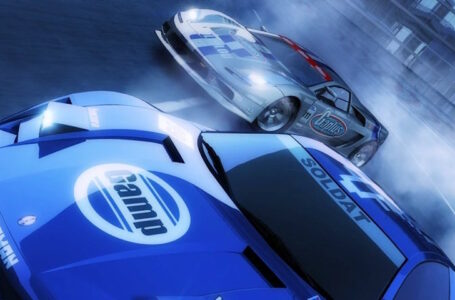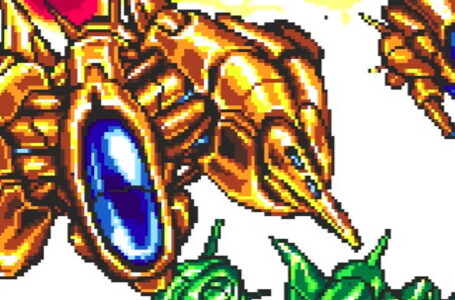2288: The aliens keep coming in Galaga ’88
After the UGSF once again thwarted the alien threat of the Galaxian-Galaga War of 2283, as chronicled in Gaplus, the enemy forces spent a few years developing a new technology in the hope of launching another successful invasion. By the time the year 2288 rolled around, the aliens’ new Hyper Drive technology was ready for use, and the first target they intended to use it on. Thus began the incident known as Galaga ’88.
The forces of the UGSF defend the Earth from the incoming enemy forces, and discover that their Hyper Drive technology allows them to escape to other dimensions through a wormhole. Seeing this as an opportunity to end the seemingly never-ending cycle of Galaxian-Galaga Wars, the UGSF launches an assault on the alien homeworld by making use of their own wormholes.
Leading the assault — and, indeed, as in previous engagements, seemingly the only participant in said assault — is the brave pilot of the new Blast Fighter spacecraft. Building on the technology successfully deployed in the previous Galaxian-Galaga Wars, the Blast Fighter features a special ability: Triple Fighter Technology, which allows it to join up with up to two other Blast Fighters for increased firepower. Surely this will be enough to conclude hostilities once and for all?
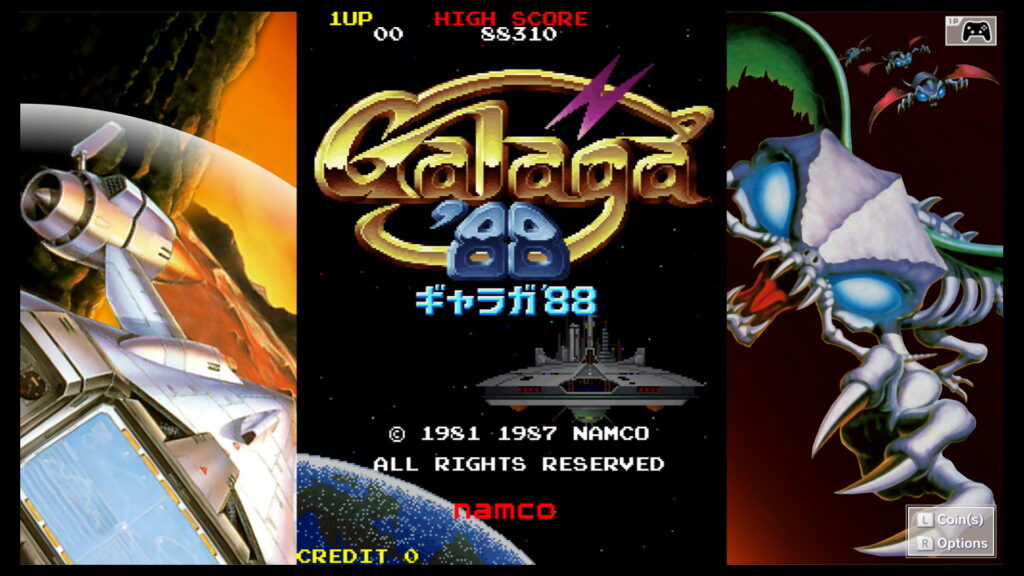
In Galaga ’88, first released in 1987 (I know), you take on the role of the Blast Fighter pilot as the attack on the Galaga homeworld begins. The game provides one of the most significant shakeups of the Galaxian and Galaga formula since the series began — though that might not immediately be apparent, since the first level features the familiar sight of insectoid enemies swooping in from the sides of the screen to make a “convoy” at the top. Shoot them while they’re swooping in and get more points; shoot them in the convoy and you’ll likely be a bit safer.
So far, so Galaga — albeit with noticeably nicer visuals. While the last few Galaga games have all had a distinctly “8-bit” look about them with limited colour palettes, Galaga ’88 makes a noticeable jump in graphical fidelity and detail, with higher resolution graphics using considerably more colours. This obvious improvement was down to the game switching from running on dedicated hardware to Namco’s multi-purpose System 1 board.
Technically System 1’s 6809 processor was still 8-bit, but it featured some 16-bit features, allowing for more impressive titles and solid performance. If that sounds familiar, it will probably not surprise you to learn that Galaga ’88 received a very good port to PC Engine, which was also an 8-bit system that punched well above its weight in terms of performance and audio-visual fidelity. But I digress.
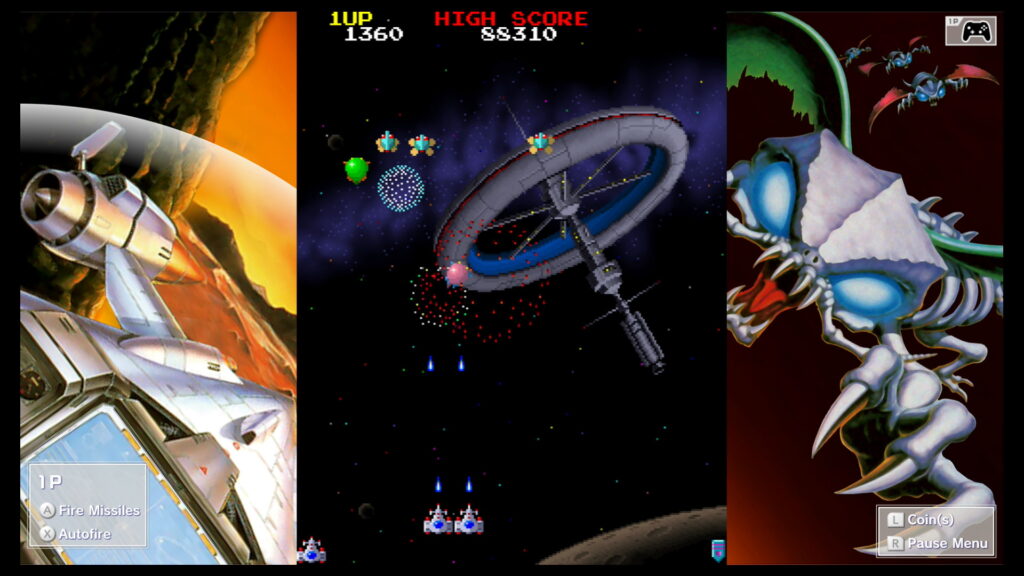
As you progress through Galaga ’88, its differences from its predecessors become more apparent. As well as fighting in the conventional “convoy” stages, you’ll also encounter scrolling stages with obstacles and hidden items that, if you survive long enough having collected them, allow you to jump through dimensions on your path towards the Galaga homeworld.
Not only that, but you’ll encounter a much wider variety of enemy types in Galaga ’88 than in previous entries in the series. There are enemies that actively dodge your shots, baddies that split into smaller pieces and even armoured foes that can’t be damaged while they’re in the convoy. The pace at which these new enemy types are introduced means that the game always feels like it’s teaching you something new — and yet nothing reinvents the game to such a radical degree that it feels like it doesn’t fit with the established mechanics.
In traditional Namco style, the regular stages in Galaga ’88 are punctuated by “Challenging Stages”, affectionately known by some as “Cha Cha Stages” owing to their delightfully incongruous Latin-style music and choreographed, music-synchronised enemy movements. “That’s Galactic Dancin’,” as the game proudly proclaims; the musical accompaniment actually helps somewhat with the critical memorisation aspect of these sequences if you want to take aim for high scores.
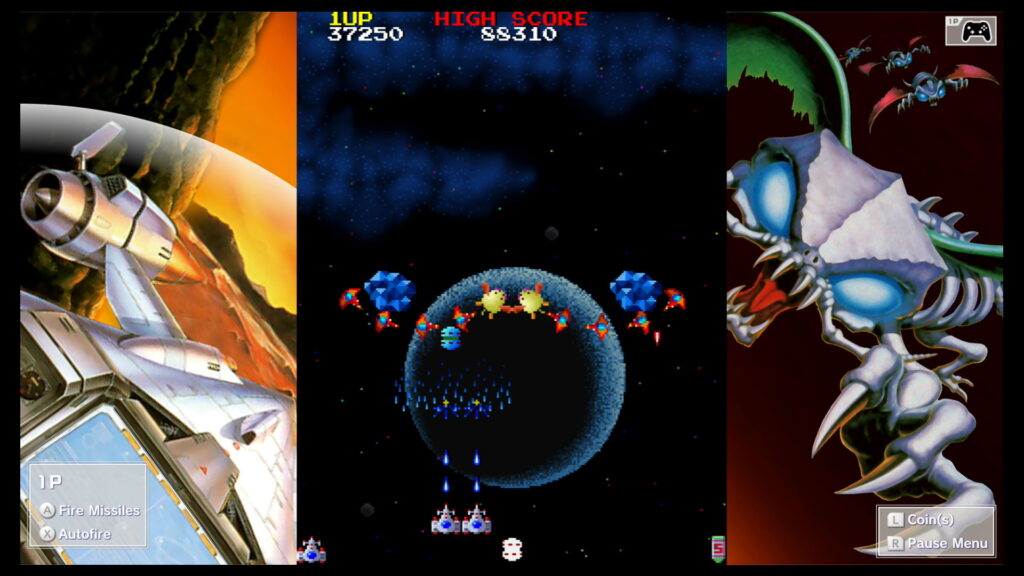
Like some other entries in the Galaxian series, Galaga ’88 put in a guest appearance in a couple of other, later Namco games. Much like a stripped-down version of the original Galaxian appeared while the first Ridge Racer was loading on PlayStation, a Galaga ’88 Challenging Stage showed up while its follow-up Ridge Racer Revolution was loading. Like in Ridge Racer, this version of Galaga ’88 allowed you to unlock various special features in the main game once it had loaded, such as new vehicles and a “Rally-X” mode with small cars (unlocked with a perfect performance), or the ability to change the time of day (unlocked by not shooting anything).
A Challenging Stage from Galaga ’88 also showed up in Ridge Racer 64 on Nintendo 64 as an unlockable extra if you beat Ridge Racer Extreme Extra in first place — though in this instance the traditional Galactic Dancin’ music was replaced by music from Ridge Racer.
Today, there are a few places you can enjoy Galaga ’88 without having to get your hands dirty with hunting down ROMs for emulation. The arcade version appears as part of the Namco Museum collection for Nintendo Switch, which is also available physically alongside Pac-Man Championship Edition 2 as the Namco Museum Arcade Pac. Its excellent PC Engine port is also available as part of Konami’s PC Engine/Turbografx-16/CoreGrafx Mini console.
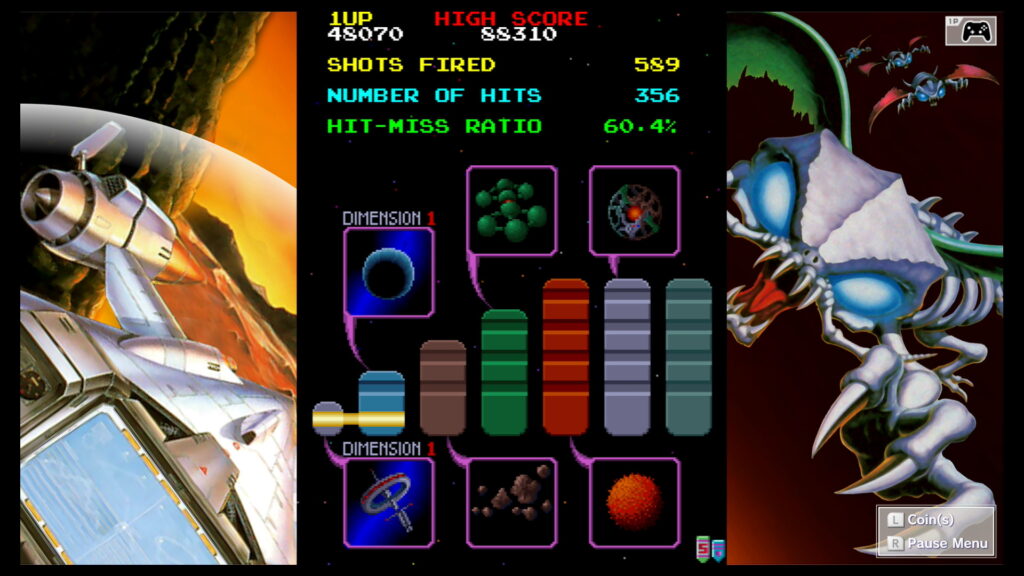
However you choose to play it, Galaga ’88 is worth experiencing. For those who struggle to engage with the older fixed shooters, it’s a nice game to bridge the gap between those classics and more modern shoot ’em ups. And for those who have been happily following the series since its earliest days, it’s a fascinating and well-designed evolution of the formula. It’s one of Namco’s best arcade games — and one that doesn’t get talked about nearly enough these days.
So what are you waiting for? Go try it for yourself! The UGSF’s discovery of Hyper Drive depends on your mad alien-blasting skills!
Join The Discussion
Rice Digital Discord
Rice Digital Twitter
Rice Digital Facebook
Or write us a letter for the Rice Digital Friday Letters Page by clicking here!
Disclosure: Some links in this article may be affiliate links, which means we may earn a small commission if you make a purchase after clicking on them. This is at no additional cost to you and helps support Rice Digital!
- Letter from the Editor: passing the torch - June 30, 2023
- Super Woden GP 2 is looking promising - June 30, 2023
- Inti Creates is making a 32 bit-style Love Live action platformer - June 26, 2023






